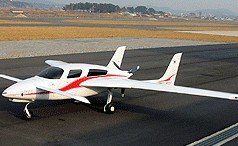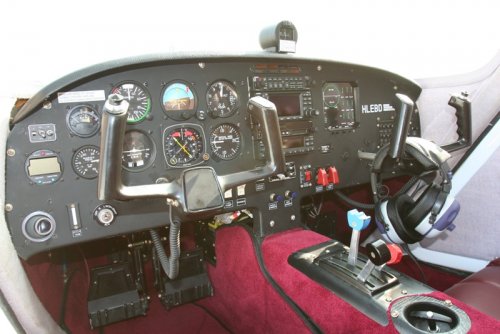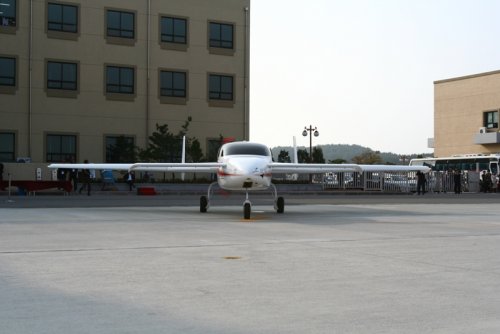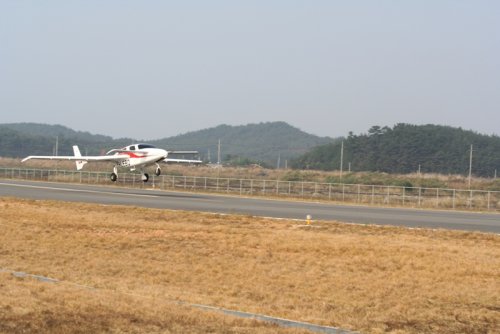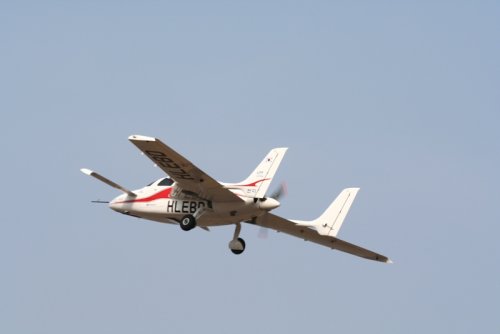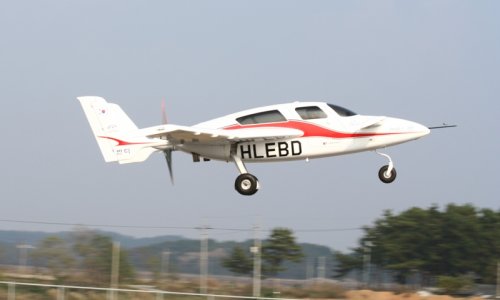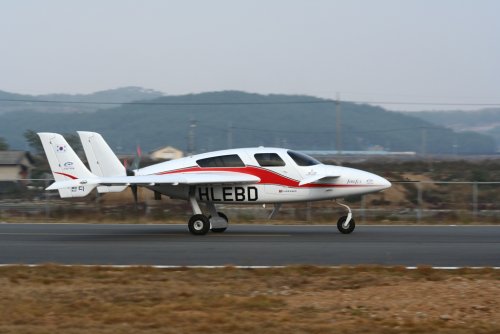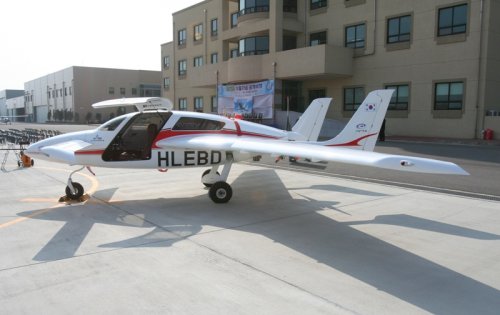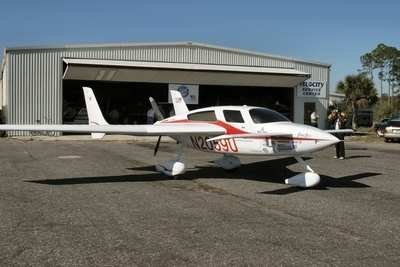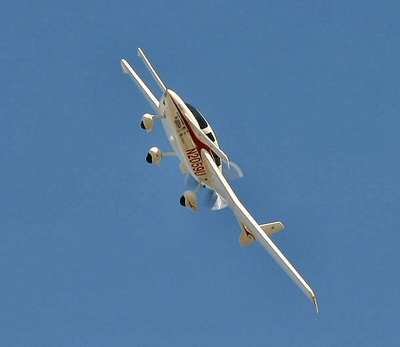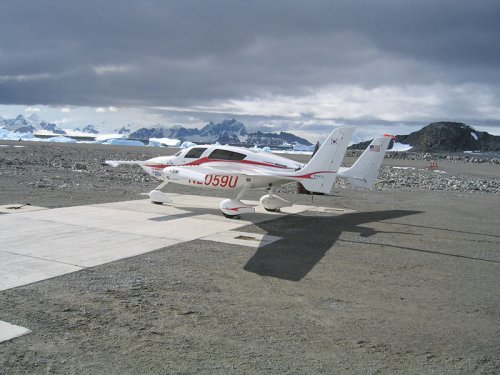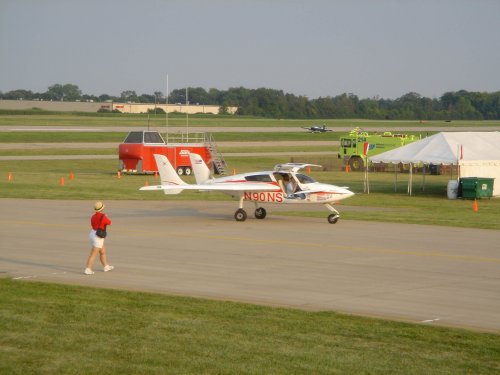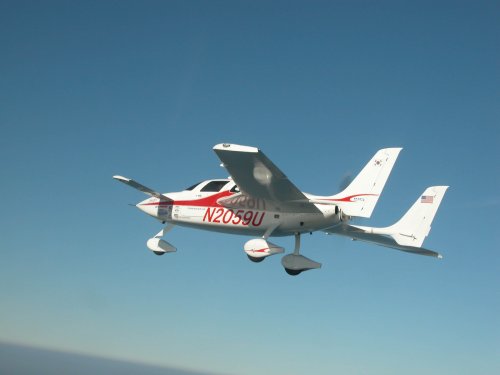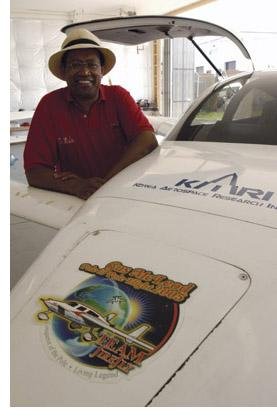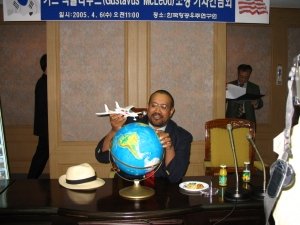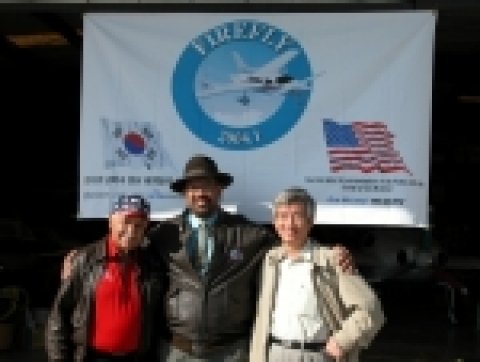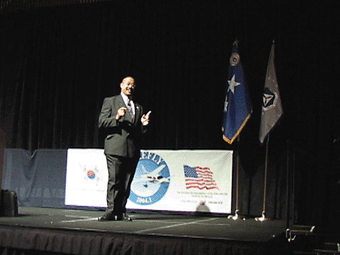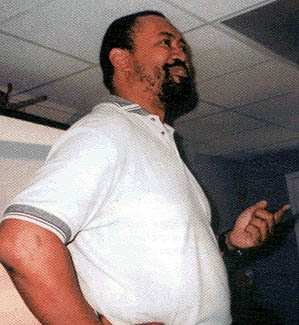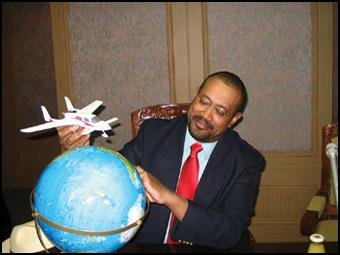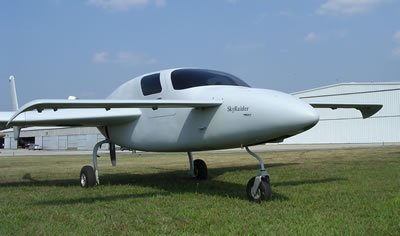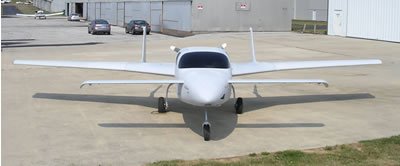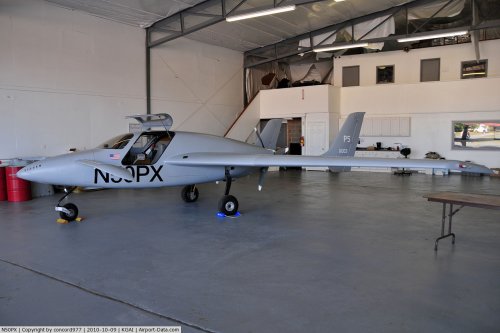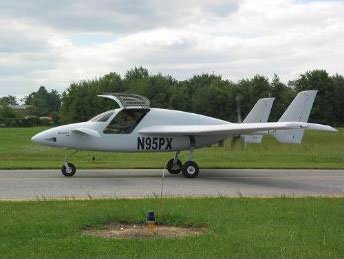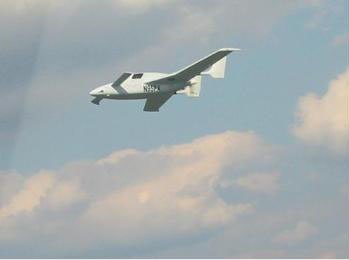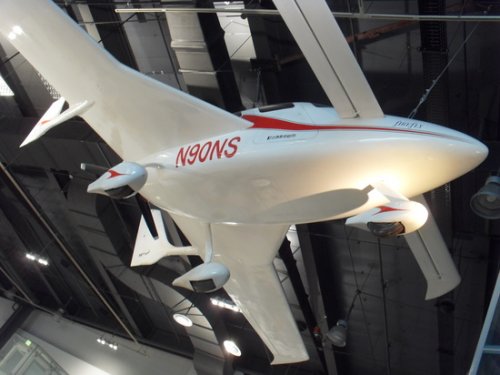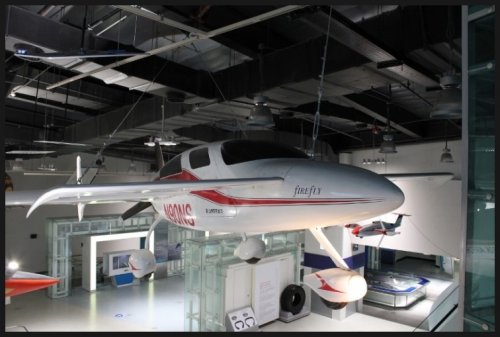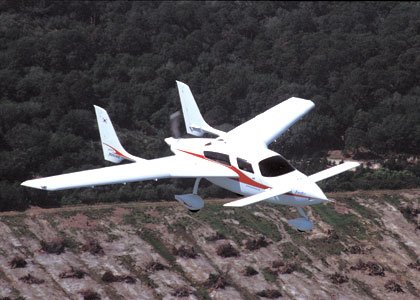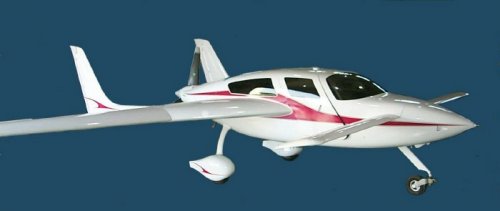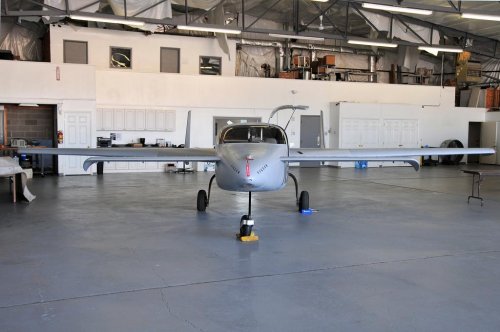After researching the subject for several hours, I'm now able to offer some consistent information on the FireFly:
The
FireFly was an attempt at providing an aircraft for the nascent general aviation market in South Korea. It was developed from 1997 to 2002 by the KARI (Korea Aerospace Research Institute), South Korea's equivalent of NASA founded in 1989. Despite claims by some Korean sources that it was "developed by pure domestic technology" it is a very unique version of the American Velocity (itself a spin-off of the famous Rutan Long-EZ) built by as a design study out of several kits. The prototype
FireFly first flew on 21 September 2001 and successfully passed it airworthiness tests on 17 June 2002. The aircraft was exhibited at Oshkosh in 2002 and received a favorable welcome there.
Production and sales of the
FireFly was to be done by Shin Heavy Industries and supported by the Ministry of Commerce, Industry and Energy as part of the so-called "four-seat aft airfoil export aircraft development program".
The round-the-world trip
Adventure pilot Gus McLeod, who had made history in 2000 for being the first to fly an open-cockpit biplane to the North Pole, now wanted to attempt a round-the-world flight across the North and South poles and back. Impressed with the
FireFly he approached KARI with the project. An agreement was reached and the #1 aircraft was leased to McLeod for modifications in the US (see list further below). In October 2003, the 49-year-old pilot made his project public. On 21 January 2004 he departed from Sebastian Airport, Florida, aboard
FireFly#1 (sporting the registration
N2059U), for his first round-the-world attempt.
McLeod flew across the west coast of South America, Ushuaia in Argentina then reached the South Pole. However, due to deteriorating weather conditions in Antarctica, he had to make two forced landings on the ice of Antarctica and another on a farmer’s field in Argentina. McLeod had to go back to the United States until he could try again. The aircraft was soon presented at Sun 'N Fun Air Show in April and then again at Oshkosh in August, now sporting the registration
N90NS.
Gus McLeod made three more attempts that stopped at the South Pole—one of which nearly ended fatally as his fuel had been contaminated with lacquer in some sabotage attempt. Although he failed to reach his goal, he flew 56,000 km in two months, which was a remarkable record. McLeod became something of a celebrity in South Korea at the time, and held lectures to inspire and challenge young people to dream and develop an interest in aviation. All the while he never stopped planning another flight, and with the tentative date of January 2008 in mind he tried to get the Korean team to improve the
FireFly design by increasing lifting power.
There was no further attempt however. The #1 aircraft was shipped back to Korea and is currently exhibited in a museum (still as
N90NS).
Further FireFly development
On the South Korean front, with all the publicity gained from McLeod's epic exploits, expectations for
FireFly exports were high. Potential customers expressed interest, notably in the United States and Saudi Arabia, but also in Turkey, Angola, Malaysia and Brunei. Planned uses of the FireFly ranged from strictly recreational to civilian or Air Force student training, and even pesticide spraying!
Shin Heavy Industries and Proxy Aviation entered into an agreement in 2006 for export to the US. The #2
FireFly airframe was shipped to the United States in August, reassembled locally in September and registered as
N95PX. The main difference from the first aircraft was the retractable landing gear. Flight testswere successfully completed on 31 October (NOTE: This aircraft is still on the register as the "Proxy Aviation Systems FireFly" and serves as an optionally piloted drone).
Negociations with Proxy Aviation for additional exports foresaw 12 aircraft to be delivered in the next two years, and a total of 60 additional export contracts expected to be available. However, only two more aircraft were assembled by Proxy,
N50PX (c/n #3) and
N60PX (c/n #4). Apparently the
FireFly fell victim to a government ban on the exports of locally produced finished products.
A further example of the
FireFly was produced in South Korea. It has a retractable landing gear and can be recognized by the non-standard registration
HLEBD which he sports on its flanks. It was exhibited on the KAI stand at Seoul's ADEX 2011 which would seem to indicate that the program is still alive.
Specifications
Maximum takeoff weight: 1,225 kg, including passengers and the pilot (up to four people)
Fuselage length: 6.6 m
Fuselage width: 1.2 m
Height: 1,1 m
Overall width (wingspan): 10.4 m
Performance
Maximum speed: 330 km/h
Cruising speed: 280-300 km/h (with 225 liters of fuel)
Minimum speed: 110 km/h
Cruising altitude: 2.4 km
Climb rate: 6.5 m per second
Take-off run: 400 m
Fuel capacity: 200 liters
Range: 1,800-1,850 km
Modifications for the round-the-world flight
The following modification work was performed locally in the U.S. by Polar Explorer Inc.:
- Mounting of additional fuel tanks
- Tyre replacement due to structural safety review and additional take-off weight
- Additional tests on stability and flight control due to weight gain
- Adaptation of the airframe to extreme temperatures
- Engine supercooling-prevention device
- Reinforcement of electrical and electronic equipment
- Installation of system to maintain internal cabin temperature
- Installation of navigation equipment for long-haul flight, a camera and a fixation for a computer
- Installation of survival equipment such as an oxygen tank for high-altitude flight and marine distress
The modified
FireFly offered approximately 1,200 liters of fuel capacity, which increased its range to 8,700 km.
The
FireFly's cockpit was conceived to be wider than most comfortable aircraft in its class. Access to cabin is made easy by doors on both sides of the fuselage, opening upwards.
The first FireFly as it appeared in the U.S. Register:
N90NS
Manufacturer: Polar Explorer Inc.
Model: FireFly
Owner: Polar Explorer Inc., Gaithersburg, MD 20877
Year built: 2004
Construction Number (C/N): 001
Number of Seats: 4
Number of Engines: 1
Engine Manufacturer and Model: Lycoming IO-540 SER
Certification Class: Experimental
Airworthiness Test: 2004-07-21
Certification Issued: 2004-11-24
Last Action Taken: 2007-11-20
Some links:Some more links (in Korean!):

